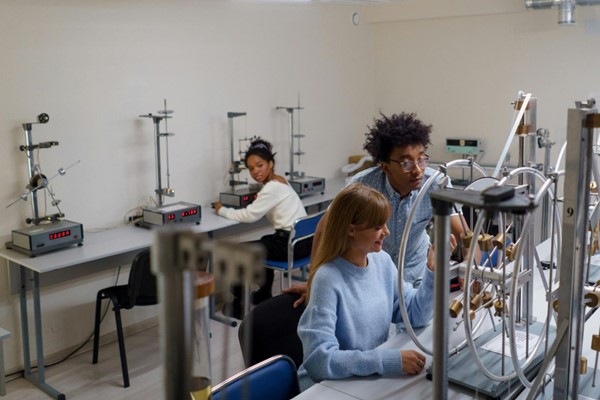
Physics, the fundamental science exploring matter, motion, and energy, is both exhilarating and demanding. University physics labs are critical for hands-on learning, yet they often come with a steep price tag. This blog post dives into the world of affordable yet effective tools for these educational laboratories, offering insights into how creativity and modern technology can intersect to enhance the learning experience without breaking the bank.
The Digital Revolution: Simulation Software
Gone are the days when students had to solely rely on physical experiments to understand complex physics concepts. Simulation software allows for the visualization and manipulation of physical phenomena in a virtual environment, offering an affordable and scalable solution for labs. From classical mechanics to quantum physics, these tools provide a complementary platform for experimentation and analysis.
Recycled and Repurposed Materials
Thinking outside the box, many educators are turning to recycled and repurposed materials for constructing lab equipment. Items that would otherwise contribute to waste streams can find new life in the physics lab. This approach not only fosters creativity and problem-solving skills but also emphasizes the importance of sustainability and environmental responsibility in science.
Measuring Light
Exploring the subtleties of light and its properties is crucial in physics, making the use of tools like the optical power meter valuable for students. These meters can help learners understand and measure the intensity of light, a fundamental aspect of many experiments that probe into the quantum and electromagnetic spectrums.
Collaborative Learning Tools
Physics education is evolving in the digital age, embracing tools that foster collaboration and debate among students. Online forums, shared virtual labs, and real-time data analysis software encourage teamwork and critical thinking. These platforms allow students from around the globe to collaborate on experiments, broadening their educational experience and understanding of the subject.
Utilizing Smartphone Sensors
Smartphones, ubiquitous in students’ lives, are powerful tools for physics experiments. Equipped with a variety of sensors—such as accelerometers, gyroscopes, and magnetometers—these devices can collect data for experiments ranging from simple pendulum motions to complex electromagnetic investigations. Leveraging smartphones in labs can drastically reduce the need for expensive proprietary sensors and data loggers.
Professional Development for Educators
Equipping educators with the knowledge and skills to incorporate new tools and resources into their teaching is essential. Professional development programs focused on innovative lab techniques and technologies can empower teachers to redesign their curriculum around affordable tools, thereby enhancing the overall educational experience for students.
Community Partnerships for Resource Sharing
Building partnerships with local businesses, community organizations, and other educational institutions can be a valuable strategy for resource sharing. These collaborations can provide access to equipment, materials, and expertise, further reducing the cost barriers for high-quality physics education and enriching the community as a whole.
DIY Culture: Building Your Own Equipment
In the spirit of innovation and cost-saving, the DIY (Do-It-Yourself) movement has taken root in physics education. With resources like online tutorials and open-access materials, instructors and students alike are now designing and building their own lab equipment. This not only reduces costs but also enhances students’ understanding of the apparatuses and the underlying physics principles.
Cost-Effective Laboratory Designs
Laboratory design plays a crucial role in maximizing the efficacy of affordable tools. Optimizing lab spaces to be more flexible and adaptable allows for the incorporation of various technologies and DIY projects. Careful planning can ensure that these spaces support diverse learning activities without requiring frequent or extensive refurbishments.
Open Source Physics Resources
The open-source movement provides a treasure trove of physics resources that are both accessible and affordable. Online platforms offer simulations, experiment designs, and educational content free of charge. By incorporating these resources, educators can enrich the lab experience, offering a diverse range of experiments without the associated high costs.
Conclusion
Universities face the dual challenge of providing quality education while also managing budgets effectively. The innovative use of affordable tools in physics labs demonstrates that high costs do not always equate to high quality. Through the creative adoption of technology, DIY initiatives, and the use of everyday devices, physics education can be both enriching and accessible. As physics labs evolve, these tools and approaches will play a pivotal role in shaping the scientists of tomorrow.


